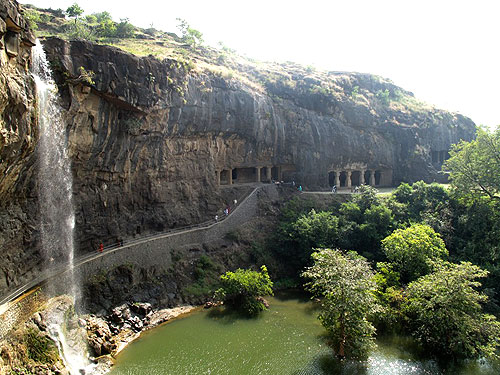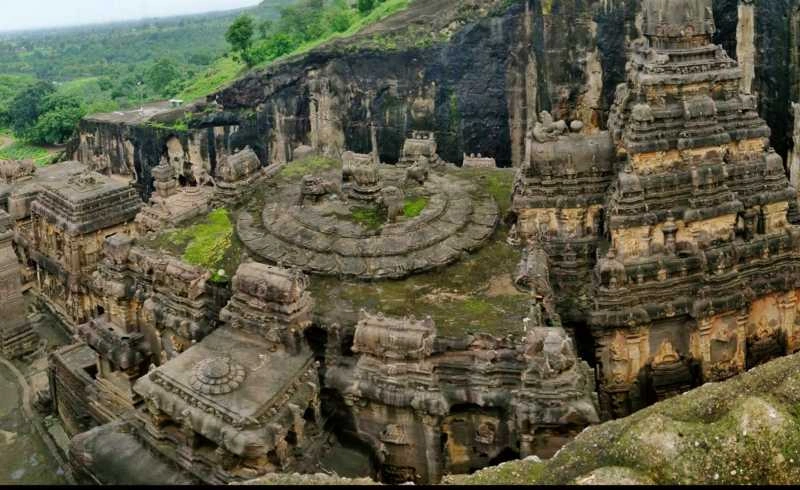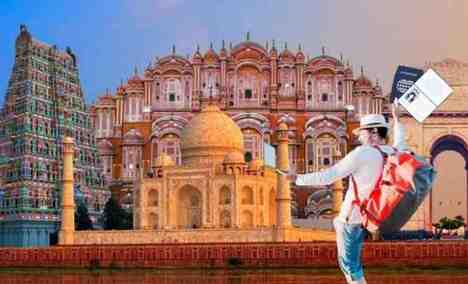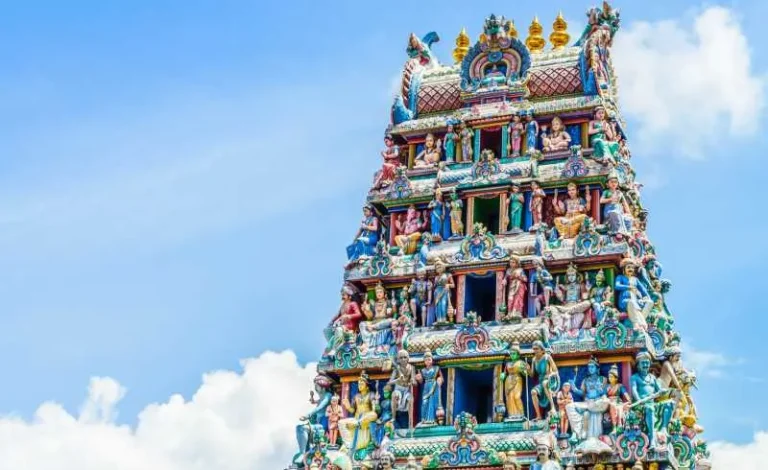March 16, 2012
Forged in the heart of rocks, Aurangabad situated Ajanta and Ellora caves are the epitomes of archaic Indian architecture and exemplification of sagacious craftsmanship. For the astounding intricate architectural details of these structures and an unmatchable manifestation of religion in them, these artifacts have been acclaimed as UNESCO World Heritage Site.
 By seeing similitude in their elegant artistry, intriguing serenity and soothing grace, one can easily assume that both these caves were etched during same period. But, no! They had been constructed in different time periods, and are instilled with varied religious elements.
By seeing similitude in their elegant artistry, intriguing serenity and soothing grace, one can easily assume that both these caves were etched during same period. But, no! They had been constructed in different time periods, and are instilled with varied religious elements.
Ajanta caves are a complex of 30 caves, which are divided into two major groups. First group of caves was sculpted around 2nd century BCE, while second group was constructed around 600 BCE. Ajanta caves are imbibed with Buddhist religiosity. The main attribute of these caves are its wall paintings. These paintings are done very carefully; the painter has first formed a plain ground of mud-plaster and then with the use of tempera technique has dexterously painted on it. The subject of these drawings circle around Buddha and Bodhisattva. Inside these caves, there are chaitya-grihas and monasteries with pillars, frescoes, murals and aisles that are richly engraved. These engravings and paintings are quite devotional and inspiring; while some draw incidents from the life of Buddha, others depict Jataka tales.
Ellora caves were excavated out of Charanandri hills, and were constructed between 5th and 8th century. These are total 34 caves, which are categorized as per their religious theme- 12 Buddhist (caves 1-12), 17 Hindu (caves 13-29) and 5 Jain (caves 30-34). Each group has its own characteristic feature, which makes it unique among all. In Buddhist caves, the craftsmen have shown an adroit work of hands by giving stone look of wood. Similarly, Hindu caves comprise expansive galleries with engraved columns, carved panels and sprawling alcoves containing sculptures of various deities. Most ascetic of these groups of caves is that of Jain caves, that expresses austere devotion. The intricate carvings, beautifully etched shrines and ornate ceilings, all speak about specific dimensions of Jain philosophy and tradition.
Overall, Ajanta Ellora caves tour display a unique excellence in craftsmanship and an eloquent display of religious themes. These are the masterpieces created by a rhythmic co-ordination of craft processes- hammering, chiseling, cutting and piercing.
Forged in the heart of rocks, Aurangabad situated Ajanta and Elora caves are the epitomes of archaic Indian architecture and exemplification of sagacious craftsmanship. For the astounding intricate architectural details of these structures and an unmatchable manifestation of religion in them, these artifacts have been acclaimed as UNESCO World Heritage Site.
By seeing similitude in their elegant artistry, intriguing serenity and soothing grace, one can easily assume that both these caves were etched during same period. But, no! They had been constructed in different time periods, and are instilled with varied religious elements.
Ajanta caves are a complex of 30 caves, which are divided into two major groups. First group of caves was sculpted around 2nd century BCE, while second group was constructed around 600 BCE. Ajanta caves are imbibed with Buddhist religiosity. The main attribute of these caves are its wall paintings. These paintings are done very carefully; the painter has first formed a plain ground of mud-plaster and then with the use of tempera technique has dexterously painted on it. The subject of these drawings circle around Buddha and Bodhisattvas. Inside these caves, there are chaitya-grihas and monasteries with pillars, frescoes, murals and aisles that are richly engraved. These engravings and paintings are quite devotional and inspiring; while some draw incidents from the life of Buddha, others depict Jataka tales.
century. These are total 34 caves, which are categorized as per their religious theme- 12 Buddhist (caves 1-12), 17 Hindu (caves 13-29) and 5 Jain (caves 30-34). Each group has its own characteristic feature, which makes it unique among all. In Buddhist caves, the craftsmen have shown an adroit work of hands by giving stone look of wood. Similarly, Hindu caves comprise expansive galleries with engraved columns, carved panels and sprawling alcoves containing sculptures of various deities. Most ascetic of these groups of caves is that of Jain caves, that expresses austere devotion. The intricate carvings, beautifully etched shrines and ornate ceilings, all speak about specific dimensions of Jain philosophy and tradition.
Overall, Ajanta and Ellora caves display a unique excellence in craftsmanship and an eloquent display of religious themes. These are the masterpieces created by a rhythmic co-ordination of craft processes- hammering, chiseling, cutting and piercing.




 By seeing similitude in their elegant artistry, intriguing serenity and soothing grace, one can easily assume that both these caves were etched during same period. But, no! They had been constructed in different time periods, and are instilled with varied religious elements.
By seeing similitude in their elegant artistry, intriguing serenity and soothing grace, one can easily assume that both these caves were etched during same period. But, no! They had been constructed in different time periods, and are instilled with varied religious elements.











